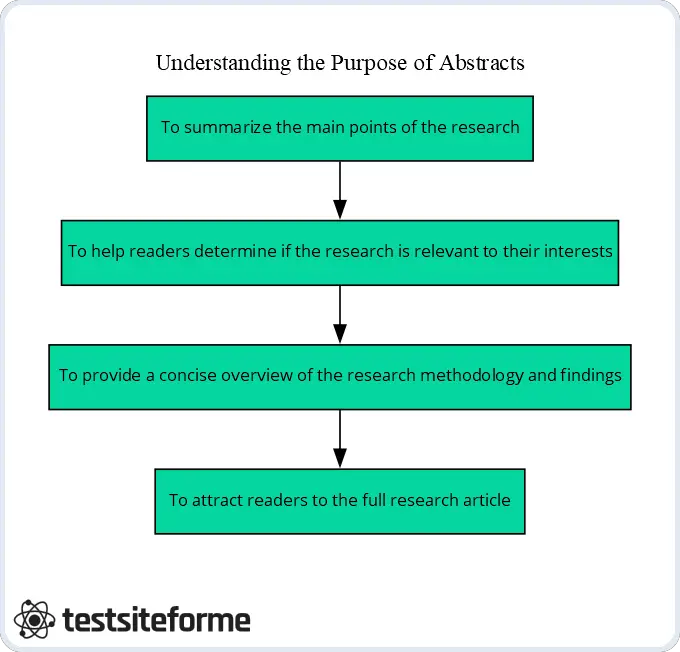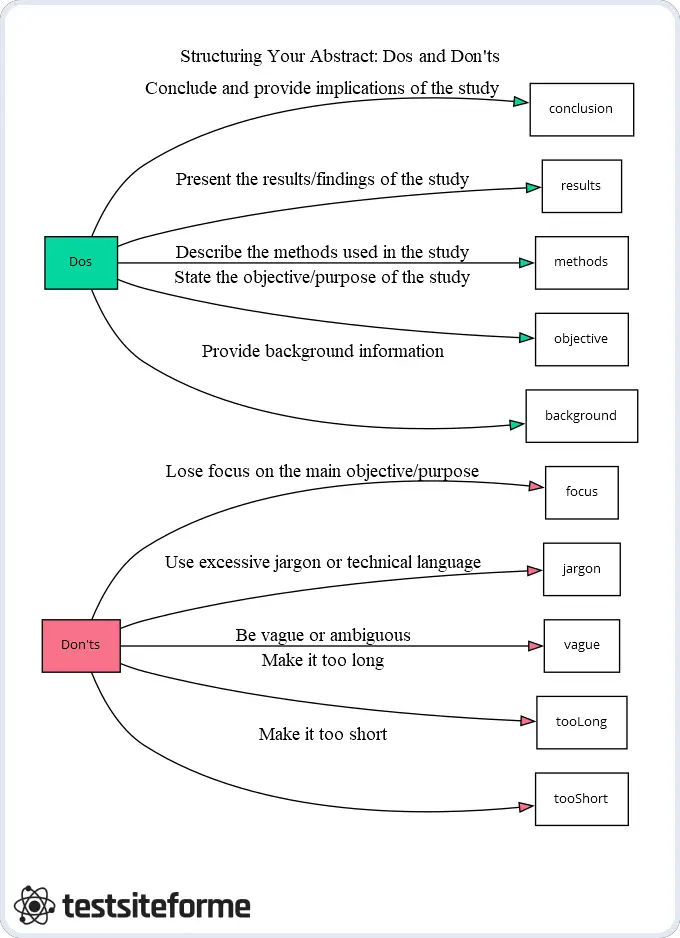Are you struggling to write a captivating abstract for your research paper? Have you ever submitted an abstract only to receive negative feedback from reviewers? Fear not, because in this comprehensive guide, we’ll explore everything there is to know about writing effective abstracts.
As researchers, we understand that the purpose of an abstract is to provide a concise summary of your research paper. However, many people still struggle with understanding how to write one effectively. This article will help you understand why abstracts are important and how they can improve the visibility of your work.
Throughout this article, we’ll delve into different types of abstracts and their differences. We’ll also discuss some tips for structuring an effective abstract while avoiding common mistakes that can result in rejection by journal editors.
We will also provide examples of well-written abstracts so that you have a clear idea of what works best in different situations. You’ll learn what essential elements should be included in every type of academic paper’s summary – from scientific papers to literature reviews.
Lastly, we will teach you how long your abstract should be based on industry standards while providing tips for editing and refining it until it stands out from other submissions.
So sit back, grab a cuppa tea or coffee (or beverage of choice), and let’s dive deep into the world of Abstract Writing!
Understanding the Purpose of Abstracts
Have you ever read a research paper or article and found yourself skipping past the introduction to get straight to the abstract? That’s because abstracts are essential summaries of a document that provide readers with an overview of what they can expect from the content.
An informative abstract provides a summary of what the research is about, while a descriptive abstract provides more details on how it was executed. A structured or scientific abstract follows specific guidelines for each section, including background, methods, results, and conclusions. An indicative abstract gives only an indication of what the research is about without going into detail.
Abstract writing is often required for academic papers and grant proposals in various fields such as science, medicine, engineering and more. The purpose of an abstract is to help readers quickly identify if they want to read further by providing them with key information in concise form.
In short – Abstracts exist to make life easier for those who are interested in researching any given topic but don’t have the time or inclination to read through lengthy documents.

Types of Abstracts and their Differences
There are two main types of abstracts: descriptive and informative. The majority of abstracts fall into the informative category, which is used for journal articles reporting on previous research. Descriptive abstracts are less common and are used more in humanities research papers.
Descriptive abstracts summarize the purpose, methods, and results of a study but do not include any analysis or evaluation. They focus on giving an overview rather than providing specific details or conclusions.
Informative abstracts, on the other hand, provide a summary of all important aspects of the article including purpose, methods, results, and conclusions. This type is more commonly used because it provides readers with enough information to make informed decisions about whether to read the entire article.
It’s important to understand that different journals may have specific requirements for their preferred style or length for each type of abstract so be sure to check guidelines before starting your writing process.
When deciding which type of abstract to use always consider your target audience as well as what you want them to gain from reading your work. If you’re unsure about how much detail should go into an informative abstract then start by listing out all major findings from previous research before trimming down words until only key points remain.
Writing an effective descriptive/ informative Abstract can be tricky; however it’s essential if you want readers to get a clear idea on what your paper entails without necessarily having to read through everything line-by-line like they would with a full-length manuscript.
Types of Abstracts Comparison
This table compares the characteristics of different types of abstracts, including descriptive, informative, and, the lesser well-known, structured abstracts. Use it to determine which type of abstract is most appropriate for your research article.
| Abstract Type | Purpose | Length | Structure |
|---|---|---|---|
| Descriptive | Summarize the main points of the article | 100 – 200 words | No specific structure |
| Informative | Provide a clear overview of the research | 250 – 300 words | Introduction, Methods, Results, Conclusion |
| Structured | Provide a summary of each section of the article | 75 – 100 words | Introduction, Methods, Results, Conclusion |
Tips for Writing an Effective Abstract
When it comes to writing effective abstracts for scientific papers, there are several things you need to keep in mind. The first and most important tip is to make sure that your abstract accurately captures the essence of your entire paper. This means crafting an informative topic sentence that clearly conveys the purpose and scope of your research.
Another key element of effective abstract writing is maintaining a comprehensive synopsis while keeping things concise. You want to provide enough information about your study so that readers can understand its significance, but not so much that they get bogged down in details.
To structure your abstract effectively, start with a brief introduction that sets the stage for what’s to come. Then move into a description of your methods and findings, using clear language and avoiding technical jargon as much as possible.
One common mistake people make when writing abstracts is trying to cram too much information into them. Remember: this isn’t meant to be an exhaustive summary of everything you’ve done; rather, it should give readers a sense of what they can expect from reading the entire paper.
In terms of length, most journals require abstracts between 150-250 words long. Keep this in mind when drafting yours – if it’s too short or too long you risk losing readers’ attention or failing to convey all the necessary information.
Finally, don’t forget about editing! Once you’ve written a draft of your abstract it’s essential to go back through and refine it until every word counts. Use active verbs and avoid passive voice whenever possible – this will help keep things engaging for readers!
When writing an abstract, focus on the most important aspects of your research, such as the key findings and their implications. Use clear and concise language, avoid jargon or technical terms that may confuse readers, and make sure to include all necessary information without going into too much detail. Remember, your abstract is often the first impression readers will have of your work – make it count
Structuring Your Abstract: Dos and Don’ts
When it comes to structuring your abstract, there are a few dos and don’ts that can help you create a clear and effective summary of your research project. First, use a framework for structure that includes key elements such as the purpose of the study, methods used, main findings, and implications for further research. This will ensure that your abstract covers all the important aspects of your research in a concise manner.
Next, avoid including detailed information or results from your literature review or research project. Instead, focus on providing an overview of the study design and main finding(s). Keep in mind that an abstract is meant to be a brief summary rather than a comprehensive report.
To make sure your abstract stands out from others in its field, list keywords at the end that accurately reflect the content of your paper. This will help readers quickly identify whether or not they are interested in reading more about your topic.
In terms of length, aim for around 150-250 words depending on journal requirements. While it may be tempting to include additional details or explanations within this space limitation, remember that brevity is key when writing an effective abstract.
Finally, consider having someone else read over and provide feedback on your abstract before submitting it for publication. This can help catch any errors or inconsistencies and ensure that you have effectively communicated the key points of your research project.
To summarize – structuring an effective abstract involves using a clear framework while avoiding unnecessary detail; listing relevant keywords; keeping it brief but informative; getting feedback from others; and most importantly – ensuring relevance with respect to both content being summarized (i.e., recent/pertinent findings) as well as audience needs/expectations (e.g., researchers looking specifically at X field).

Common Mistakes to Avoid in Abstract Writing
When it comes to academic writing, bad abstracts are all too common. From incomplete sentences to irrelevant information, there are several common weaknesses that plague many abstracts. To avoid these mistakes and ensure your abstract accurately represents your complete paper, keep the following tips in mind.
- Make sure your abstract is a concise summary of your entire paper. Avoid including unnecessary details or repeating information from other sections of the paper. Instead, focus on highlighting the most important points and key findings.
- Use complete sentences throughout your abstract. This not only makes it easier to read but also helps convey a sense of professionalism and attention to detail.
- Avoid using vague language or overly technical terms that may be unclear to readers outside of your field. Instead, aim for clear and concise language that accurately conveys the main ideas of your research.
- Proofread carefully for errors in grammar or spelling before submitting your final draft. A well-written and error-free abstract can help set the tone for a successful research paper.
Avoid using jargon or technical language in your abstract. Instead, use plain language that is accessible to a broad audience. Also, be sure to keep your abstract concise and focused on the most important points of your research. Remember, the goal of an abstract is to entice readers to read your full article or paper – so make it engaging and compelling
How Long Should an Abstract Be?
One of the most common questions people ask when writing an abstract is, “how long should it be?” The answer to this question is not straightforward as it depends on the type of document you are writing. Generally, an abstract should be between 1-3 sentences for a professional paper and about 150-250 words for a research article or dissertation.
The length of your abstract also depends on the level of detail required to convey your key message effectively. For example, if you are writing a summary that covers several aspects of your research question, then you may need more than one sentence to cover all the important points. On the other hand, if you have only one significant finding or conclusion to convey, then a single sentence may suffice.
It’s essential to note that even though there is no hard and fast rule regarding how long an abstract should be; it must contain all crucial elements necessary to summarize your work accurately. Therefore, ensure that every word in your summary counts and conveys meaning efficiently.
Simply put, when it comes to abstract writing length matters but relevance matters more. Keep in mind that while adhering strictly to word limits can be helpful in some cases; ensuring that every part of your summary conveys its purpose clearly and effectively is much more critical.
Examples of Well-Written Abstracts
Writing a good abstract can be challenging, but reviewing examples of well-written abstracts can help you understand what works and what doesn’t. There are different types of abstracts, including informative and narrative reviews, and each one has its unique requirements. In this section, we’ll explore some great examples of well-written article abstracts.
For an informative abstract on a research paper about the effects of exercise on mental health in college students, consider the following example:
Example 1:
“In this study, we investigated the impact of regular exercise on psychological distress among college students. Results indicated that participants who engaged in physical activity exhibited reduced symptoms of depression and anxiety compared to those who did not engage in any form of physical activity. Our findings suggest that regular exercise could serve as an effective intervention for improving mental health outcomes among college-age individuals.”
This example provides essential information about the study’s purpose and key findings using concise language while adhering to typical standards for informative abstract writing.
For narrative reviews such as literature reviews or book critiques:
Example 2:
“This review explores various approaches to teaching grammar in second language acquisition (SLA) classrooms worldwide. We begin by outlining traditional methods before moving onto more communicative techniques used today such as task-based learning (TBL). The comparative analysis reveals that TBL aligns with current best practices for SLA instruction by prioritizing student-centered activities over rote memorization exercises.”
This example effectively summarizes a larger piece while still providing enough detail to encourage readers’ interest.
To reiterate, writing an excellent article or research paper depends heavily on crafting a compelling yet precise summary – your “abstract.” Take note from these examples above when drafting yours!
Comparison of Two Well-Written Abstracts
This table compares the key components of two other well-written abstracts, highlighting what makes them effective. Use it to improve your own abstract-writing skills.
| Component | Abstract 1 | Abstract 2 |
|---|---|---|
| Purpose | To investigate the effects of exercise on mental health | To examine the relationship between sleep and academic performance |
| Methods | Randomized controlled trial with 50 participants | Survey study of 200 college students |
| Results | Exercise had a significant positive effect on depression and anxiety | Poor sleep quality was associated with lower GPA and decreased academic performance |
| Conclusion | Regular exercise can be an effective treatment for mental health issues | Improving sleep habits may lead to better academic performance |
What to Include in Your Abstract: Essential Elements
The essential elements of an abstract are crucial to its effectiveness. To begin with, the central idea or main point of your research should be clearly stated in the abstract. This means that key ideas and phrases that encapsulate the essence of your work should be included upfront in a concise manner.
Another important element is providing readers with a brief summary of your methodology and data analysis techniques employed throughout your research. This helps to establish the context for understanding how you arrived at your key findings.
Speaking of which, including major findings is another critical component of a well-crafted abstract. Your readers need to understand what new knowledge they stand to gain from reading further about this topic.
Lastly, it’s important that you stay within the prescribed word limit for writing an abstract. Be sure not to exceed this limit as it could result in rejection by reviewers who might feel overwhelmed by too much information being presented all at once.
Looking at the big picture, crafting an effective abstract requires careful attention to detail and adherence to certain guidelines. By focusing on these essential elements – central idea, methodology & data analysis techniques used, key findings – you can ensure that your work stands out from others and makes a significant contribution towards advancing knowledge in your field. So go ahead– include these core components when writing up those next few paragraphs!
Editing and Refining Your Abstract
Editing and refining your abstract is a crucial step in the abstract writing process. Before submitting your research paper to academic journals, it is essential to ensure that your abstract is error-free and accurately represents your work. Journal editors often use the abstract as a basis for deciding whether or not to send a paper out for peer review, so it’s important to get it right.
One effective way of editing an abstract is by reading through it several times and checking for any spelling or grammatical errors. As you read through, check that all the essential elements are included such as the purpose of research, methodology used, results obtained, conclusion reached among others. Use introductory phrases such as “this study aims at,” “this research examines,” etc., in place of starting with pronouns like “we” which can make an abstract sound informal.
To refine your writing further, consider asking someone else (a colleague or friend) to read over your draft and give feedback on its clarity and coherence. Try using markdown lists to highlight key points or ideas within the text itself; this will help both you as well as potential readers better understand what you’re saying.
When crafting an effective abstract, remember that most academic journals have strict word limits when comes to publishing articles- typically between 150-250 words maximum depending on discipline requirements. Therefore ensure that every sentence counts towards conveying relevant information about the research conducted rather than being vague about what was achieved during experimentation.
Editing and refining an abstract takes time but ultimately leads to better results overall when submitting papers for publication in academic journals. By following these tips listed above including paying close attention to detail while also keeping things concise yet informative one can create a strong final product worthy of consideration by journal editors during peer review processes!







